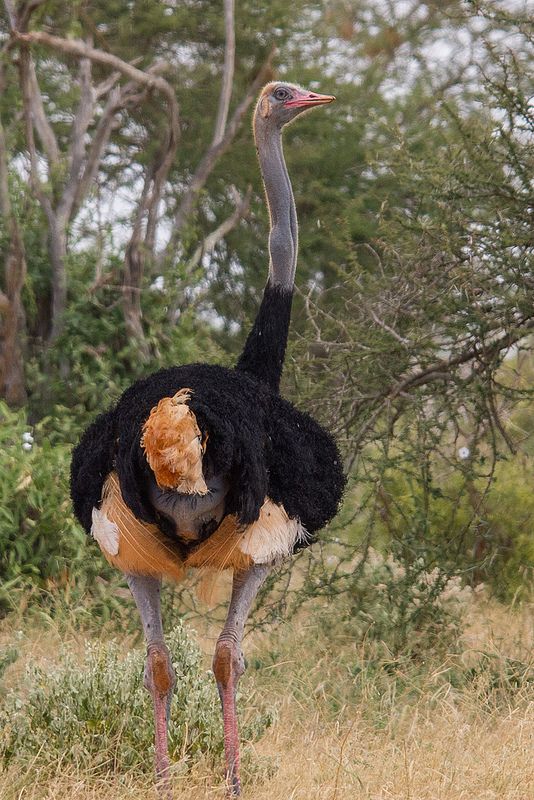The Banyan Tree (Ficus benghalensis) is the National Tree of India.
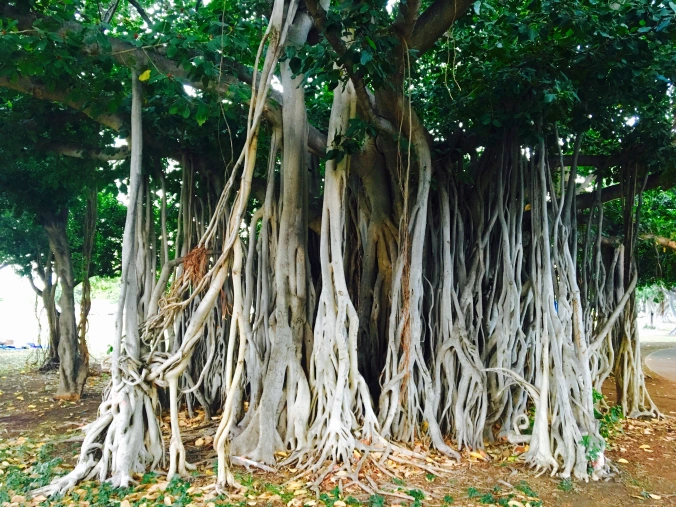
Introduction to India’s National Tree – Banyan
Indian fig tree, Ficus bengalensis, Or the banyan tree whose branches lodge themselves like new trees over a large area. The roots again give rise to other caddies and branches. Because of this characteristic and its life, this tree is immortal and is an integral part of the myths and legends of India. Indeed moment, the banyan tree is the focal point of village life and the village council meets under the shade of this tree.
Scientific Information about the National Tree of India
Banyan, also known as the “banian,” is a fig that begins its life as an epiphyte. Epiphytes are plants that grow on top of another plant when seeds germinate in the crevices or crevices of the host tree or building. “Banyan” often specifically refers to the Indian country tree Ficus Bengal Bodaiju (“Banyan of India”), because the name refers to all figs that share a common life cycle.
| Kingdom | Plantae |
| Division | Magnoliophyta |
| Class | Magnoliopsida |
| Order | Urticales |
| Family | Moraceae |
| Genus | Ficus |
| Zoological name | Ficus Benghalensis |
| Other names | Bargad, Bor, Ber, Ala and Pedda mari, Nayagrodha, Ala mara, Bar, Vad, Vatnam, Bahupada, Peddamarri, Al are the other names used for the Banyan tree. Indians call it a wish-fulfilling tree. |
| Other Species | F. aurea, F. benghalensis, F. citrifolia, F. macrophylla, F. microcarpa, F.pertusa, F. rubiginosa are the other related species of the Banyan tree. |
Description: The banyan tree is a massive tree with many branches. As per the estimates, more than 10,000 people can sit in its shade at any given moment. Also, It’s a type of evergreen tree. To support itself, it spreads out its branches and sends trunk-like roots to the ground. It can reach a height of more than Banyan Tree21 meters and has a long lifespan. Moreover, the leaves are ten to twenty centimetres long and have numerous aerial roots. The leaves are lustrous, wide, and oval. If the leaves are broken, a white milky substance pours forth. Furthermore, It has the potential to grow into a large tree that covers several hectares.
Location: The Banyan tree is India’s national tree, and you can grow them in practically every section of the country. In addition, You can find them in deciduous forests across the sub-Himalayan region. Moreover, the Botanical Garden in Calcutta has a Banyan Tree. Furthermore, In India, they are widely present in the Ranthambore and Corbett National Parks.
Sustainability and Banyan Tree
Aforestation and soil conservation

The banyan is a fast-growing tree that has traditionally been utilized for soil conservation and afforestation. Here are some methods you can use to teach your children on how to protect the environment.
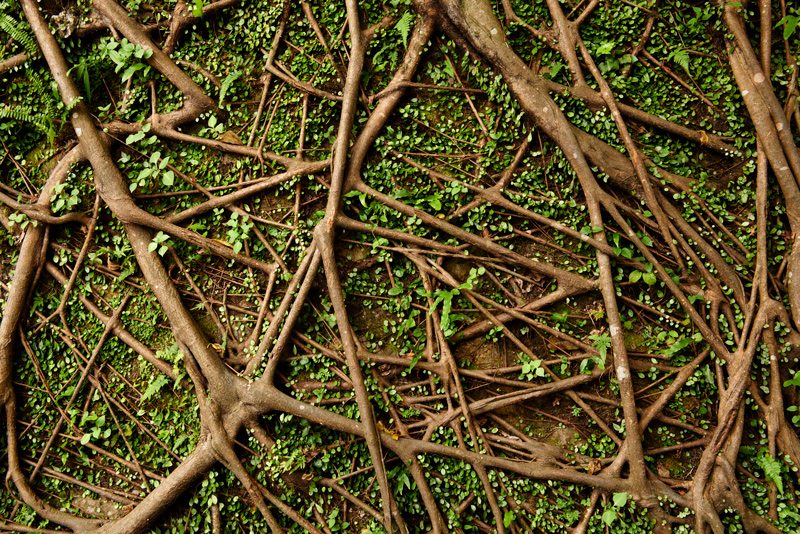
Mitigation of methane emissions
Banyan foliage was proven to cut enteric methane emissions by 20% when fed to ruminants (Bhatta et al., 2014) (See the section on Ruminants)
Invasiveness
Outside of its native region, the banyan is a pioneering and potentially invasive plant. In Miami-Dade County, Florida, for example, it is unlawful to sell or plant the plant (USA). Ficus benghalensis, if left unchecked, can pose a hazard to infrastructure and buildings, since it can consume the host if it germinates in fence posts, bridges, walls, or buildings (US Forest Service, 2014).
Banyan Tree and the Environment
The banyan, India’s national tree and also known as the “ancient powerful tree,” is well-known for its ability to emit a large amount of oxygen. Planting such trees in your neighbourhood can be incredibly advantageous because they ensure air purity and reduce CO2 levels in the atmosphere. Additionally, the banyan heals a variety of ailments and infections in Ayurveda. Apart from the fact that it emits a lot of oxygen, it has therapeutic benefits.
They take in the air around them through stomata, which are thick pores on the leaves. A stoma, also known as a stoma, is a pore that controls the rate of gas exchange and is present within the epidermis of leaves, stems, and other organs. Moreover, a pair of specialized parenchyma cells known as guard cells surround the pore and are responsible for regulating the size of the stomatal opening. A mature tree can absorb CO2 at a rate of 48 times its weight pounds each year while returning enough oxygen to the environment to support two people.
How to Grow a Banyan Tree
The banyan tree (Ficus benghalensis) has strange-looking aerial roots that appear to be many trunks when they reach the ground. In addition, It can reach a height of 100 feet and can cover many acres of ground in its native India and Asia.
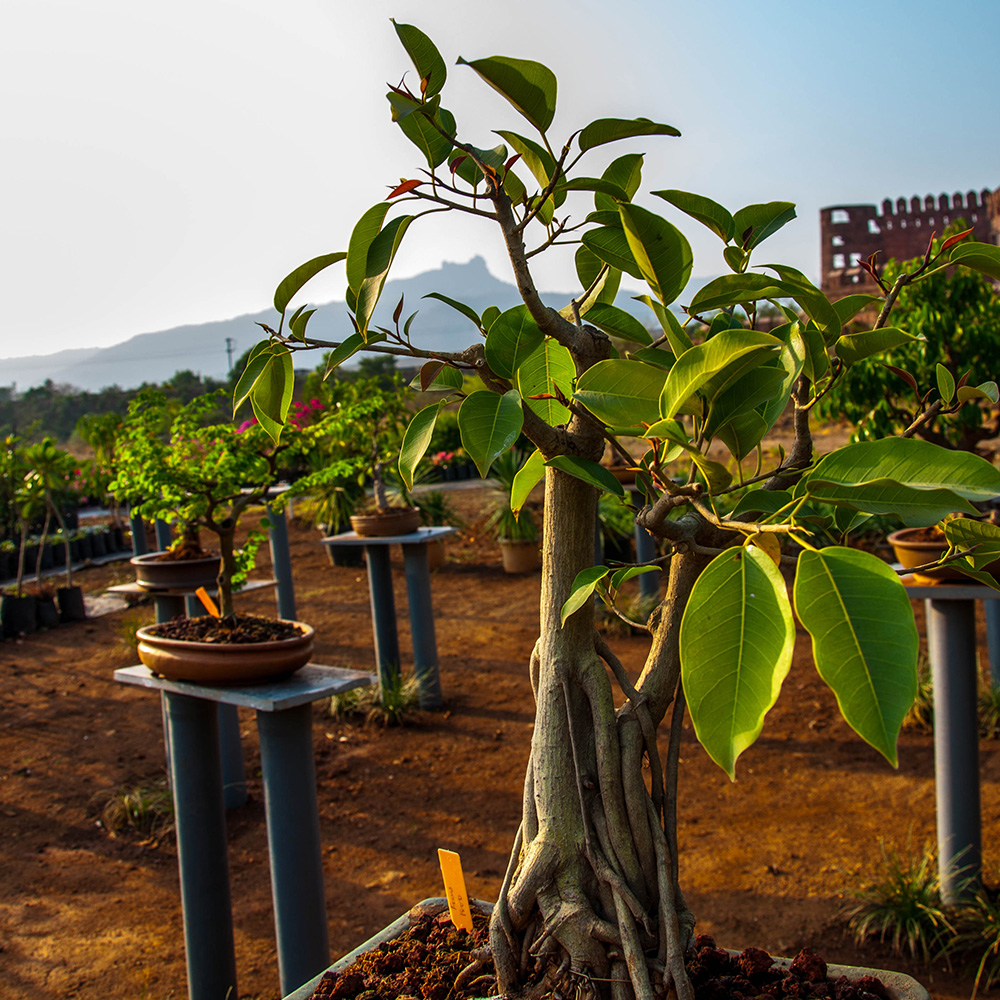
The tree is commonly grown as a patio or houseplant because of its size and the fact that it demands fairly mild temperatures all year. One can grow them solely indoors or placed outside till the weather cools down.
Step 1
Mix one part peat moss with three parts potting soil in a growing container. And plant the banyan tree at the same depth as it was in its container.
Step 2
Soak the dirt until it is saturated.
Step 3
Place the tree in a location where it will get plenty of indirect sunlight for many hours each day. Summer temperatures should be between 70 and 80 degrees Fahrenheit, and winter temperatures should not go below 55 degrees Fahrenheit.
Step 4
Regularly inspect the soil and water only when it is absolutely dry. Add enough water to completely saturate the plant’s roots.
Step 5
From early spring through late fall, feed once a month with liquid fertilizer blended at half the recommended rate.
Step 6
As needed, remove any dead or damaged leaves. To manage the size of the tree and encourage fuller growth, pinch the tips of new growth.
Step 7
Every two to three years, transplant to a larger container.
How to Make a Ficus Hedge
Gardeners and homeowners love ficus hedges because they provide a dense, compact privacy fence around the patio. With their lush green foliage, tall trees like ficus are ideal for engulfing a patio or backyard space.
- To ensure the ficus hedge’s success, conduct a soil pH test on the specified planting area. A ficus hedge growing outside of its optimal temperature range of 5.5 to 7.5 will struggle to survive. You can find a soil testing kit from your local county extension office. To obtain soil samples, dig a 6-inch hole. Please send the samples to the address on the kit. If your soil is acidic, add lime, and if it’s alkaline, add Sulphur.
- Dig a hole twice the diameter of the root ball and the same depth as the tree’s root ball in the container. Also, place the tree in the hole and pack the soil around the base carefully. Spread 6 inches of mulch around the plant’s base to keep moisture in.
- Give the ficus a full growing season before pruning it, so it can create a robust root system and avoid pruning shock. Water the hedge once a week throughout the first year of growth. Under the dripline, give the plant 1 inch of water. Furthermore, the dripline is the area just beneath the branch tips.
- In the spring, fertilize the ficus hedge using an all-purpose slow-release fertilizer. Also, You can use a fertilizer with an 8-8-8 NPK ratio. Moreover, water thoroughly spread underneath the tree. For ficus hedges, an all-purpose fertilizer is preferable because a nitrogen-rich fertilizer will cause the hedge to grow too quickly.
Banyan Tree health benefits

In India, the banyan tree, also known as Bargad, is highly revered and venerated. Moreover, It has a reputation for surviving and growing for decades. It also has a prominent role in Hindu mythology, where it is said to grant desires and other material gains, earning it the moniker of Kalpa virksha. The banyan tree not only grants material wishes but also has some health benefits. Here are a few examples.
Also read from the Podium School.
Aids in the prevention of tooth decay and gum disease.
Gum disease, teeth decay, and bleeding gums are all prevented by eating the aerial roots. The aerial roots are natural toothpaste and are utilized to treat foul breath. It also strengthens the teeth. Equally Important, aerial roots are antibacterial and astringent, making them beneficial against a wide range of mouth health issues.
Helps to prevent heart disease
The most common cause of death in the world is a heart attack. Heart disease, such as coronary heart disease, may be caused by elevated salt levels in humans, in addition to the fat that clogs the artery. Moreover, a high sodium level promotes arterial constriction and decreases blood circulation throughout the body.
According to a study on the nutritional value of banyan tree fruit, the fruit contains a significant amount of potassium, which helps to lower the body’s sodium levels. Furthermore, It also contains natural minerals including magnesium, phosphorus, omega 3 and 6 fatty acids, and polyphenol, which help to lower blood pressure and prevent coronary heart disease. According to experts, eating banyan tree fruit at least once a day lowers the chance of a heart attack.
Helps to prevent cancer
Aside from preventing heart attacks, the fruit of the banyan tree also protects against cancer, the world’s second leading cause of death. There are some cancer-causing variables. Likewise, the number of free radicals is one of them. Free radicals harm skin cells and cause normal cell proliferation to accelerate, resulting in cancer cells. Moreover, the consumption of banana tree fruits meets the requirement for polyphenol, an antioxidant that fights free radicals.
Furthermore, cervical cancer, prostate cancer, breast cancer, brain cancer, and colon cancer are among the cancers that can be warded off by eating the fruit of the banyan tree.
Immunity Booster
A healthy lifestyle necessitates a strong immune system. Immunity aids in the prevention and treatment of illnesses. In addition, the bark of the banyan tree is a powerful immunity booster.
Dysentery and Diarrhea
The banyan tree’s leaf buds are useful in the treatment of chronic diarrhoea and dysentery. Furthermore, In the treatment of various disorders, soak the buds in water overnight and administered them as an infusion. Latex, to treat dysentery and diarrhoea.
Weight loss assistance
The fruit of the banyan tree has the magical ability to both increase and decrease weight. To gain weight, we can drink the fruit juice of the banyan tree with milk every night before bed. Equally important, Dietary fibre included in the fruit of the banyan tree can help you gain weight and maintain a good posture without adding fat to your body. On the other side, we can drink banyan tree fruit juice without milk or sugar to lose weight. Along with regular exercise, the treatment will be beneficial.
Keeps a clear eyesight
Consumption of three or more banyan tree fruits daily can lower the risk of age-related macular degeneration. The fruit of the banyan tree is abundant in vitamins A, C, and E, which help to maintain excellent health. The fruit of the banyan tree is abundant in vitamins A, C, and E, which help to preserve good vision
Piles
A few drops of banyan tree latex mixed in milk and given once a day can help to heal bleeding piles. Moreover, the patient’s diet should include a lot of green vegetables, especially fenugreek and manattakkali (black nightshade leaves) throughout this treatment.
Sterility in Women
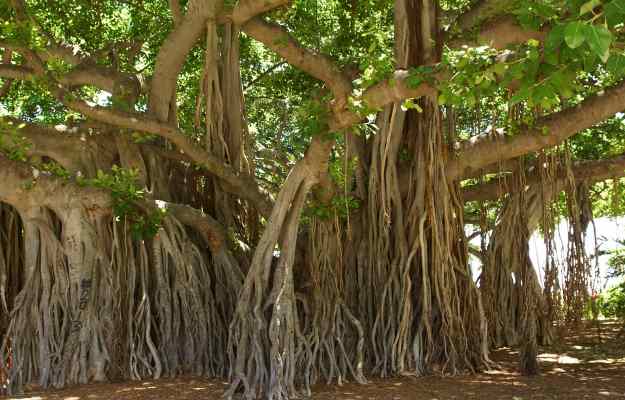
The tender roots of the banyan tree are thought to help treat female infertility. These roots should be finely pulverized after drying in the shade. Combine this powder 5 times its weight in milk and consume every month after the menstruation cycle for 3 nights in a row till conception occurs. This should not be taken with any other food.
Leucorrhoea
In leucorrhoea, regular douching of the vaginal tract with a decoction of the bark of the banyan and fig trees is beneficial. Each tablespoon of powdered bark from the two trees should be cooked in a litre of water until it has been reduced by half. Furthermore, the tissues of the vaginal tract will be kept healthy by douching with the lukewarm decoction.
Skin Problems

To increase suppuration and speed the bursting of abscesses, a hot poultice of the leaves can be applied with good effects. Also, the milky juice extracted from fresh green leaves is effective in the treatment of warts. Locally, latex is used to treat wounds, ulcers, and bruises.
Infections in the vaginal area are treated.
Vaginal infections can occur as a result of poor hygiene and the vagina becoming wet. Additionally, the bark and leaves of the banyan tree can treat vaginal infections. To make a tablespoon of powder, crush a handful of dried banyan leaves. Also, boil this powder in a litre of water until the liquid reduces to half a litre. Allow the infusion to cool before applying it to the affected region.
Improves the immune system
One of the health benefits of banyan tree fruit is that it boosts the immune system. Moreover, the antioxidants flavonoid, polyphenol, and vitamin C found in banana tree fruit can boost your immunity. Furthermore, avoiding both moderate and severe diseases is advantageous.
Maintains physical fitness
Banyan tree fruit water, if consumed once a day, can help to maintain bodily fitness. Also, You may either boil the fruit in the water and drink it or prepare infused water with the fruit pulps of the banyan tree and your favourite fruits.
Reduce Respiratory difficulties.
Asthma is one of the most commonly encountered respiratory syndromes. Infection in the human respiratory system, particularly the alveolus, is the most common cause of asthma. Moreover, regular consumption of banyan tree fruit will assist to alleviate the problem because it contains antibacterial and antiseptic properties that will successfully reduce infection.
Furthermore, the fruit of the banyan tree includes a significant volume of natural fluids, which aid in the relief of sore throat pain.
Aids in the prevention of anaemia
The fruit of the banyan tree has excellent anti-anemia properties. It can increase the production of hemoglobin in the blood. Additionally, It is feasible because the fruit of the banyan tree contains a high level of iron. Furthermore, we know that iron is the most important component in the production of hemoglobin.
Remove Kidney stones .
The fruit of the banyan tree contains a diuretic component that helps to flush out waste and stones from the kidneys.
Religion and mythology
Banyan trees play an important role in several Asian and Pacific religions and myths, including:
- In Hinduism, the leaf of the banyan tree is the resting place for the godhead Krishna.
- In the Bhagavat Gita Krishna said, “There is a banyan tree which has its roots upward and its branches down, and the Vedic hymns are its leaves.
श्रीभगवानुवाच |
ऊर्ध्वमूलमध:शाखमश्वत्थं प्राहुरव्ययम् |
छन्दांसि यस्य पर्णानि यस्तं वेद स वेदवित् || 1||
Translation: The Supreme Divine Personality said: They speak of an eternal aśhvatth tree with its roots above and branches below. Its leaves are the Vedic hymns, and anyone who knows the secret of this tree is a Vedic scholar.
15.1 BG
The material world is depicted here as a tree with upward-facing roots and downward-facing branches. We’ve all seen a tree with upward-facing roots: if you stand on the bank of a river or a reservoir of water, you’ll notice that the trees reflected in the water are upside down.
Additionally, the branches go downward and the roots upward.
Similarly, the physical world reflects the spiritual world. The material world is only a reflection of reality. Furthermore, there is no reality or substantiality in the shadow, but we can understand that there is substance and reality from the shadow.

Vat Purnima is a Hindu festival related to the banyan tree. Vat Purnima is observed by married women in North India and the Western Indian states of Maharastra, Goa, Gujarat. During the three days of the month of Jeyestha in the Hindu Calendar (which falls in May–June ) married women observe a fast and tie threads around a banyan tree and pray for the well-being of their husbands.

- In Buddhism’s Pali canon, the banyan is referenced numerous times. Typical metaphors allude to the banyan’s epiphytic nature, likening the banyan’s supplanting of a host tree as comparable to the way sensual desire (kama) overcomes humans.
- In Guam, the Chamorro People believe in tales of Taotao Mona , duendes, and other spirits. Taotaomona are spirits of the ancient Chamorro that act as guardians to banyan trees.
- In Vietnamese mythology of the mid-Autumn festival, the dark makings on the Moon are a banyan, a magical tree originally planted by a man named cuoi on Earth. Moreover,when his wife watered it with tainted water, the tree uprooted itself with the man clinging to it and flew to the Moon, where he lived forever with the Moon lady and the Jade rabbit.
- In the Philippines they are usually referred to as balete Tree which are home to certain deities and spirits.
- In Bangladesh Banyan trees are called বঢ গাচ/bod gach and places that have such tree are considered haunted. Moreover, they are said to be home to Jinns and other dangerous spirits. Furthermore, It is said that if you cut one down, you will be cursed.
Commonly Asked Questions
Q. 1 What is special about Banyan tree?
Banyans are strangler figs. Additionally, they grow from seeds that land on other trees. Moreover, the roots they send down smother their hosts and grow into stout, branch-supporting pillars that resemble new tree trunks. Furthermore, Banyans are the world’s biggest trees in terms of the area they cover.
Q. 2 How long does Banyan Tree live?
The Banyan tree is the National tree has an average life span of around 325 years.
Q. 3 Can you eat Fig tree fruit?
The reddish fruit of the Banyan tree is not toxic per se but they are barely edible, the worst of famine food. While its leaves are edible, we also make plates and use them for wrapping food. Furthermore, Fig leaves add flavor to fire-cooked foods.
Q. 4 Which is the oldest banyan tree In the world?
The Great Banyan Tree is over 250 years old and covers about 14,500 square meters of land (3.5 acres) in the Acharya Jagadish Chandra Bose Botanical Garden near Kolkata (Calcutta), making it the widest tree in the world. Furthermore, Banyan is a tree native to India and Its botanical name is Ficus benghalensis.
Q.5 What is the smallest Tree in India?
Dwarf Willow or Salix Herbacea is one of the smallest woody plants in the world. In addition, It grows to only 1-6 cm in height and has round, shiny green leaves 1-2 cm long and broad.
Q. 6 Which is the oldest tree in India?
This 250-year-Old Banyan Tree of India is Widest Tree in the World. Moreover, the great banyan tree located in Howrah (Kolkata) in Acharya Jagadish Chandra Bose Indian Botanic Garden is the biggest and oldest tree in India. Furthermore, It covers an area of about 14500 square meters or 3.5 acres making it the widest tree in the world.
Q. 7 Where are Banyan Trees found?
Banyan trees are plentiful in India and Pakistan, where they’re the national tree. However, some can also be found in Florida. In addition, They grow from seeds that land on other trees. Moreover, the roots they send down smother their hosts and grow into stout, branch-supporting pillars that resemble new tree trunks. Furthermore, Banyans are the world’s biggest trees in terms of the area they cover.




